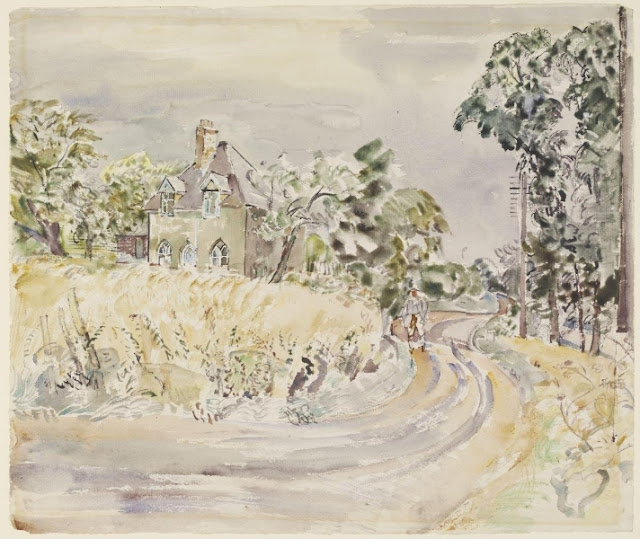 |
| The Toe Memorial - as it is now, and as it was 100 years ago... |
 |
| The remains of the "Toe Memorial" today... |
At the top of the path that runs to the west of Birch Wood, just to the south of the parish boundary between Cuxton and Cobham, lie the remains of a rather curious monument, locally known as the “Toe Memorial.”
 |
| Edward Bligh, 5th Earl of Darnley... |
“On 4th.
February 1835, Lord Darnley was walking in the [Cobham] Park with his cousin,
Charles Bligh, when they came across some woodcutters. Possibly thinking that
he could do better, Lord Darnley borrowed an axe and said ‘Now I’ll show you
how to cut a root in halves’. He struck a mighty blow that glanced off the root
and nearly severed his little toe..."
He started and said: “I have harmed myself, I fear! But it might have been worse and I ought to consider myself fortunate…” He staggered to a nearby cottage just above the scene of the accident, where his foot was dressed.
But in the days before tetanus injections, such an injury was a serious matter. This illness, (also known as lockjaw) set in and a week after the accident, the Earl died.
 |
| Edward Bligh, 5th Earl of Darnley... |
Some have written that the Countess Darnley’s shrine to her late husband is a “monument to arrogance and stupidity”, but a little research soon shows that the arrogance and stupidity lies only with those who would suggest such a thing. Indeed, this slur has been thoroughly debunked by local historian Geoff Ettridge in his excellent blog post on the subject (a link to which is given below).
As Geoff tells us, the 5th Earl of Darnley was, by any standards, a forward-thinking, honest, liberal man who was well respected by all who knew him, and his sad loss was keenly felt by both his peers and his estate workers at the time. To imply that he was perennially arrogant or stupid is a grievous sleight, both upon the man’s character and to his memory.
The memorial, alas, has not withstood the tests of time. Rather like the adjacent Darnley mausoleum (built in 1876 by the third Earl of Darnley, Edward’s grandfather) it suffered extensive vandalism in the seventies and eighties, but unlike the mausoleum, it has not been subject to restoration.
A photograph of the memorial from around 1920 shows the Toe Memorial as it was in its original state (see below).
 |
| The Toe Memorial, c. 1920... |
I suspect that the scrap value of its intricate metal railings may have been a big factor behind its subsequent destruction. There is certainly no trace of them in the area now, whilst the carved stonework still lies sadly scattered around the remaining plinth.
Debretts Peerage tells us that the Arms of Bligh (the
heraldic symbols of the Earls of Darnley) comprises of “Azure, a
I don’t have a clue as to what any of that means, but the gryphon motif can be seen on one of the fallen stones, and features prominently above the entrance to the nearby Darnley Mausoleum, as shown below…
 |
| Headstone from memorial bearing the Darnley heraldic gryphon... |
 |
| Heraldic Darnley gryphons above the Mausoleum entrance (N.B. Finem Respice: Consider The End)... |
Perhaps one day the Toe Memorial will be restored to its former condition but for the moment, it remains one of Cuxton’s many hidden and intriguing gems.
References:
1) Cuxton: A Kentish Village by Derek Church (published by Arthur J Cassell Ltd, 1976, ISBN 0 903253 12 7), p 18.
2) "Memorial to Lord Darnley's Toe", Geoff Rambler's Weird and Wonderful Kent, blog post by Geoff Ettridge (link here).
3) Lost Landscapes - Cuxton Heritage Trail (link here).








